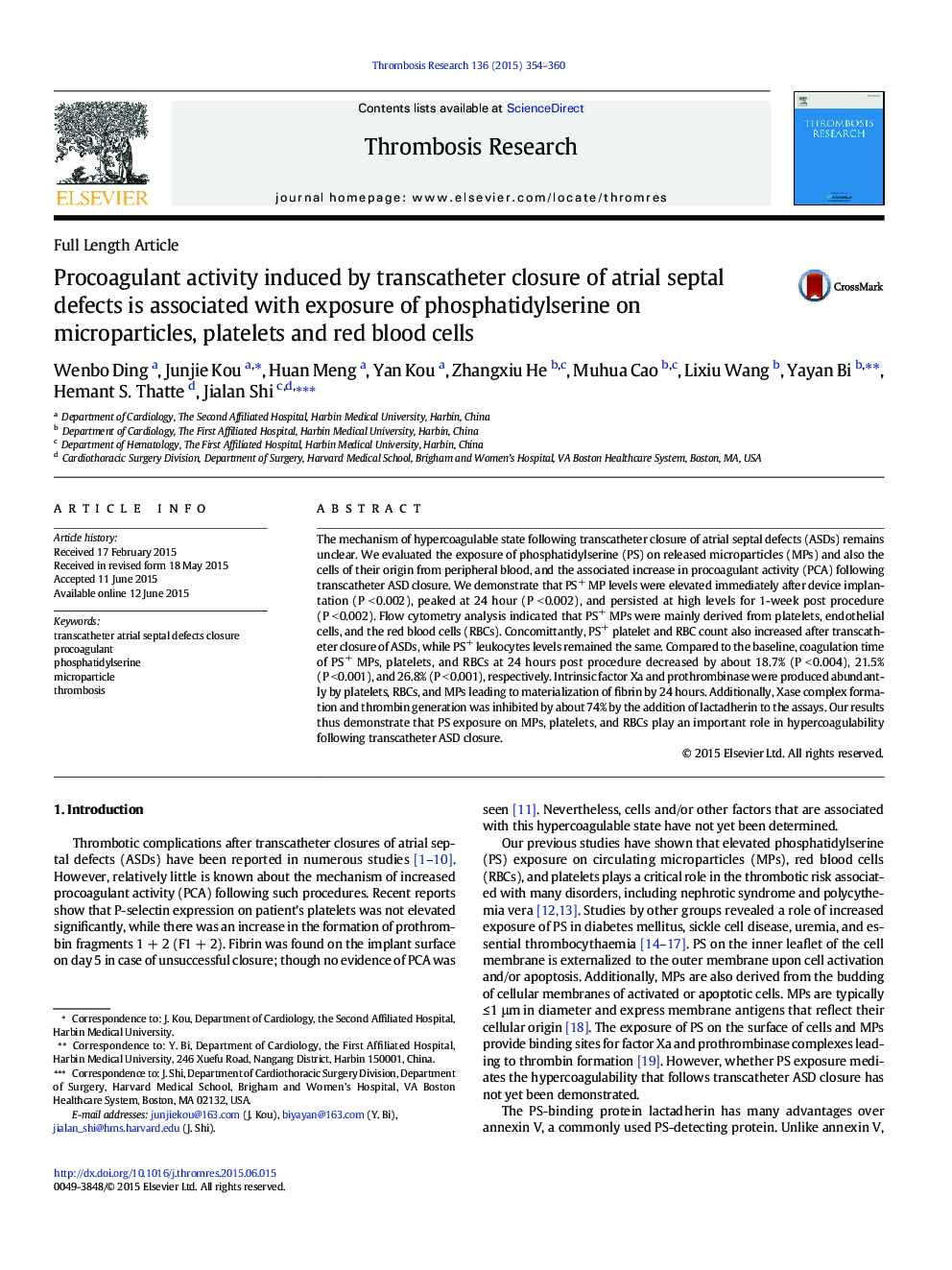| Article ID | Journal | Published Year | Pages | File Type |
|---|---|---|---|---|
| 6001312 | Thrombosis Research | 2015 | 7 Pages |
â¢We demonstrate the mechanism of hypercoagulability after transcatheter ASD closure.â¢We first indicate that exposure of PS on MPs, platelets and RBCs increases immediately after transcatheter ASD closure.â¢PS exposing platelets, RBCs and MPs are of hypercoagulability.
The mechanism of hypercoagulable state following transcatheter closure of atrial septal defects (ASDs) remains unclear. We evaluated the exposure of phosphatidylserine (PS) on released microparticles (MPs) and also the cells of their origin from peripheral blood, and the associated increase in procoagulant activity (PCA) following transcatheter ASD closure. We demonstrate that PS+ MP levels were elevated immediately after device implantation (P <Â 0.002), peaked at 24Â hour (P <Â 0.002), and persisted at high levels for 1-week post procedure (P <Â 0.002). Flow cytometry analysis indicated that PS+ MPs were mainly derived from platelets, endothelial cells, and the red blood cells (RBCs). Concomittantly, PS+ platelet and RBC count also increased after transcatheter closure of ASDs, while PS+ leukocytes levels remained the same. Compared to the baseline, coagulation time of PS+ MPs, platelets, and RBCs at 24Â hours post procedure decreased by about 18.7% (P <Â 0.004), 21.5% (P <Â 0.001), and 26.8% (P <Â 0.001), respectively. Intrinsic factor Xa and prothrombinase were produced abundantly by platelets, RBCs, and MPs leading to materialization of fibrin by 24Â hours. Additionally, Xase complex formation and thrombin generation was inhibited by about 74% by the addition of lactadherin to the assays. Our results thus demonstrate that PS exposure on MPs, platelets, and RBCs play an important role in hypercoagulability following transcatheter ASD closure.
